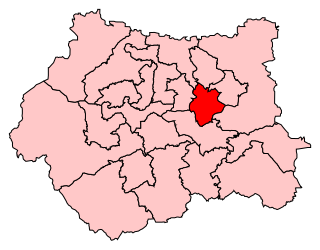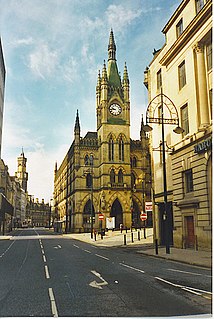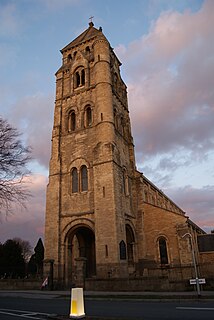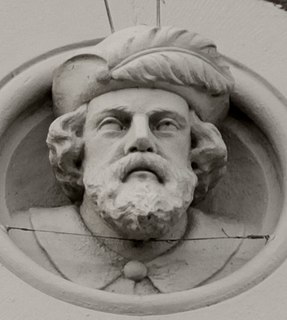
An amusement arcade is a venue where people play arcade games such as video games, pinball machines, electro-mechanical games, redemption games, merchandisers, or coin-operated billiards or air hockey tables. In some countries, some types of arcades are also legally permitted to provide gambling machines such as slot machines or pachinko machines. Games are usually housed in cabinets. The term used for ancestors of these venues in the beginning of the 20th century was penny arcades.

An arcade is a succession of contiguous arches, with each arch supported by columns, piers. Exterior arcades are designed to provide a sheltered walkway for pedestrians. The walkway may be lined with retail stores. An arcade may feature arches on both sides of the walkway. Alternatively, a blind arcade superimposes arcading against a solid wall. Blind arcades are a feature of Romanesque architecture that influenced Gothic architecture. In the Gothic architectural tradition, the arcade can be located in the interior, in the lowest part of the wall of the nave, supporting the triforium and the clerestory in a cathedral, or on the exterior, in which they are usually part of the walkways that surround the courtyard and cloisters.

Arcade Fire is a Canadian indie rock band, consisting of husband and wife Win Butler and Régine Chassagne, along with Win's younger brother William Butler, Richard Reed Parry, Tim Kingsbury and Jeremy Gara. The band's current touring line-up also includes former core member Sarah Neufeld, percussionist Tiwill Duprate and saxophonist Stuart Bogie.

Leeds Central is a constituency recreated in 1983 represented in the House of Commons of the UK Parliament since 1999 by Hilary Benn of the Labour Party. A former guise of the seat spanned 1885 to 1955.

The Wool Exchange Building in Bradford, West Yorkshire, England is a grade I-listed building built as a wool-trading centre in the 19th century. The grandeur of its Gothic Revival architecture is symbolic of the wealth and importance that wool brought to Bradford. Today it contains a small shopping centre.
Schofields was a department store that operated on The Headrow in Leeds, England, from 1901 to 1996. For much of the 20th century Schofields was regarded as being the pinnacle of shopping in Leeds city centre.

Briggate is a pedestrianised principal shopping street in Leeds city centre, England. Historically it was the main street, leading north from Leeds Bridge, and housed markets, merchant's houses and other business premises. It contains many historic buildings including the oldest in the city, and others from the 19th and early 20th century, including two theatres. It is noted for the yards between some older buildings with alleyways giving access and Victorian shopping arcades, which were restored in late 20th century. The street was pedestrianized in the early 21st century.

The economy of Leeds is the most diverse economy of all the UK's main employment centres and has seen the fastest rate of private-sector jobs growth of any UK city and has the highest ratio of public to private sector jobs of all the UK's Core Cities. Leeds has the third-largest jobs total by local authority area with 480,000 in employment and self-employment at the beginning of 2015. Leeds is the largest legal and financial centre in the UK outside of London, and in 2011 its financial and insurance services industry was worth £2.1 billion. with more than 30 national and international banks located in the city. Leeds is also the UK's third largest manufacturing centre with around 1,800 firms and 39,000 employees, Leeds manufacturing firms account for 8.8% of total employment in the city. The largest sub-sectors are engineering, printing and publishing, food and drink, chemicals and medical technology. Leeds is also ranked as a gamma world city by the Globalization and World Cities Research Network; Over the next ten years, the economy is forecast to grow by 25% with financial and business services set to generate over half of GVA growth over that period with Finance and business services accounting for 38% of total output. Other key sectors include retail, leisure and the visitor economy, construction, manufacturing and the creative and digital industries.

Trinity Leeds is a shopping and leisure centre in the Victorian District of Leeds, England, named after the adjacent 18th-century Holy Trinity Church. It opened on 21 March 2013, with over 130,000 recorded visitors on opening day. The development is in two parts: Trinity East, a new build development on the site of the former Trinity and Burton Arcades, and Trinity West, the redeveloped Leeds Shopping Plaza. The development has a catchment of 5.5 million people offering a spend of £1.93 billion annually. It has lifted Leeds from seventh to fourth in the CACI UK retail rankings and has created over 3000 jobs.

Leeds city centre is the city centre of Leeds, England. It is within the Leeds Central parliamentary constituency, represented by Hilary Benn as MP since a by-election in 1999. The term central Leeds is often used to describe the city centre, although it refers to a wider area within the Inner Ring Road. While the city centre has no formal definition, it is roughly bounded by the Inner Ring Road to the north and the River Aire to the south and can be divided into four-quarters.

Leeds is a city in West Yorkshire, England.

Leeds Hunslet Lane railway station was opened by the North Midland Railway in Leeds in 1840 in what was then a middle-class area, south of the city.

The Light is a leisure and retail centre in central Leeds in West Yorkshire, England. It occupies the rectangular space between The Headrow on the south, St Anne's Street on the north, Cookridge Street on the west, and Albion Street. Two former streets divide it: Upper Fountaine Street (east-west) and Cross Fountaine Street (north-south) now covered with a glass roof. It incorporates two listed buildings Permanent House and the Headrow Buildings.

The Grand Arcade is a shopping arcade located on New Briggate in Leeds, West Yorkshire, England, and a Grade II listed building. It was built by New Briggate Arcade Company Ltd in 1897, with Smith & Tweedal as architects, in Renaissance style with Art Nouveau details.

Victoria Leeds is a shopping and leisure area in Leeds city centre. It combines the 1990 Victoria Quarter west of Vicar Lane and the 2016 Victoria Gate shopping centre east of Vicar Lane. It includes a casino and major stores such as Harvey Nichols and John Lewis and Partners, and the largest stained glass work in Britain, by artist Brian Clarke.

Saint Edward King and Confessor Church is a Roman Catholic church in Clifford, West Yorkshire. The church is the largest in Clifford and its tall tower is the most prominent structure in the area. The church is a grade II Listed building and serves Clifford and the surrounding villages. The church lies in the Roman Catholic diocese of Leeds and deanery of Harrogate.
Leeds is known for its culture in the fields of art, architecture, music, sport, film and television. As the largest city in Yorkshire, Leeds is a centre of Yorkshire's contemporary culture and is the base for Yorkshire's television and regional newspapers.

John Wormald Appleyard was a sculptor and monumental mason based in Leeds, West Yorkshire, England. He was sixteen years old when his apprenticeship as a stone carver was curtailed due to the death of his grandfather who was training him. He was versatile enough to turn his hand to wood carving, decorative ceiling work, stained glass and marble sculpture besides stone carving, so that from around the age of twenty-one years he was able to maintain a stoneyard and studio in Cookridge Street, Leeds, at least until 1891. He was generally known during his lifetime as a monumental mason. He is mainly known today in Leeds for his wooden Jacquemart figures of Robin Hood, Friar Tuck, Richard the Lionheart and the swineherd Gurth, which strike the hours on the Ivanhoe clock at one end of Thornton's Arcade in Briggate. He is also known for his figure of Old Father Time on the Tempus Fugit clock on the Time Ball Buildings, Leeds.
















